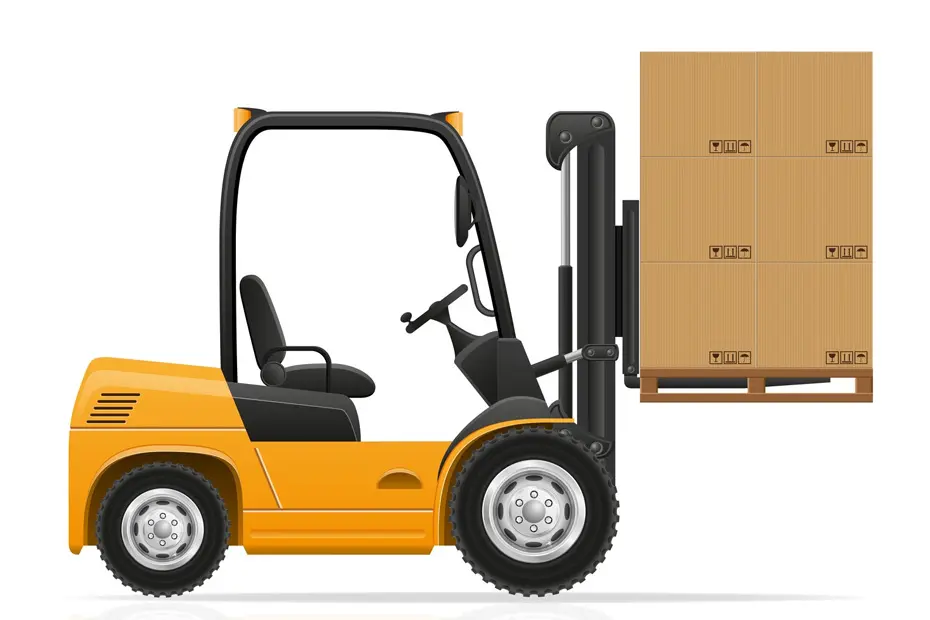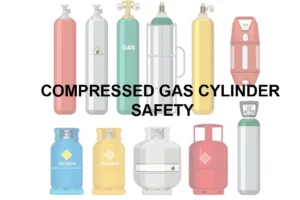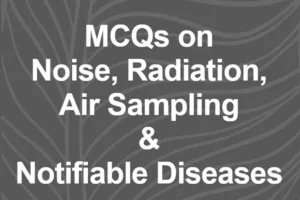FORKLIFT SAFETY PROCEDURE
PURPOSE:
The purpose of this procedure is to establish and maintain minimum required Forklift Safety Program (FSP) elements that protect employees from personal injury to self & others and property damage during the movement of products and materials with Forklift and Pallet Stackers, and to comply with regulatory requirements.
SCOPE:
Applies to all Forklifts used in Entity
All employees who operate a Company owned, leased or rented forklift.
Applies to all employees exposed to material handling hazard.
This program applies to all Forklifts & Stackers powered by electric motors or internal combustion engines used for Company business purpose.
DEFINITIONS:
BU Head – Administrative Head of any Business Unit which may involve more than one unit of the particular Business.
Contractor – Organization or individual that contracts with Company for the construction / supply of material / provision of services / expert advice / etc.
Plant Manager – A Manager, overall responsible for planning & executing of regular operations including HSE matters, at manufacturing facility/construction site/project/sales or research office/ any working unit.
In absence of Plant manager the designated person shall function as Plant Manager.
Forklifts – Includes Forklifts & Stackers, powered by Electric motors or Internal Combustion Engines, being used for company business purpose in India.
Section In-Charge – A person accountable for managing a particular section of the facility.
Vehicles – All the transport vehicles other than Mobile Equipment used at shop floor or construction site e.g. forklift, etc.
PROCEDURES STATEMENTS/STATEMENT OF WORK:
Responsibilities
Various people must work with the Health, Safety and Environment (HSE) Leader to successfully implement this program.
Their responsibilities are defined by functional job titles as shown below:
Plant Manager:
Overall responsible for implementation of policy at his/her facility. Ensure all management and employees are aware of the Forklift Safety Program
Supply required resources to successfully implement the FSP.
Review and act appropriately and assertively to the FSP annual audit findings and recommendations.
Regional HSE Leader
- The Regional HSE Leader for India has overall responsibility for the implementation of this Program.
- She/He will coordinate and manage the overall written Forklift Safety Program and advise the Plant Managers of any program deficiencies noted requiring his/her action or involvement.
- Half yearly separate HSE Audits to ensure compliance of the Forklift Safety Program will be conducted at every site which will cover records, training, periodic and preventive maintenance, testing, surveys, results etc. The Plant Manager/ Section In-Charge will be given and audit report with recommendations, if any.
Site HSE Manager:
Conduct routine surveys of work areas to ensure implementation of Forklift Safety Program. Inform the concerned Section In-charge in case of any violation.
Section In-charge:
- Fully support and assist in the implementation of the FSP.
- Provide full support to the Site HSE Leader as required.
- Must ensure that their employees are following safe operating procedures when using Forklifts.
- Ensure engineering controls, where utilized, are maintained properly, and notify Maintenance Dept. of the need for repairs where necessary
- Notify the Site HSE Manager about any operating changes or new processes that may affect the FSP.
- Ensure the appropriate and scheduled preventive maintenance
Employees:
- Obey all established requirements outlined in the FSP without any exceptions.
- Inform the Plant Manager / Site HSE Leader / Section In-charge regarding any concerns or improvements to the FSP.
Maintenance and Engineering:
- Follow all the elements outlined in the FSP without exceptions.
- Maintain and service Forklift regularly to eliminate all potential environment and safety hazards
PROCEDURE STATEMENTS / POLICY
Employees who operate Forklift must follow the safe operating procedures specified below.
Qualification, Training and Authorization of Forklift Operator Policy
Pre-Qualifications for Operators
Forklift operators must meet the following basic requirements prior to starting initial or annual training:
- Have an operator’s authorization (internal license) and clean driving record.
- No adverse vision problems that cannot be corrected by glasses or contacts.
- No adverse hearing loss that cannot be corrected with hearing aids.
- No physical impairments that would impair safe operation of the Forklift.
- No neurological disorders that affect balance or consciousness.
- Not taking any medication that affects perception, vision, or physical abilities.
- Not driving after consuming alcohol or drugs.
Training
An HSE Leader / experienced operator / HSE Consultant must conduct training for Forklift operators. All operational training must be conducted under close supervision. An employee must pass both the classroom and practical part of the testing process. A passing grade of 80% or better is mandatory for the written test and practical test before the operator is issued an authorization (Internal License) for driving the Forklift which will be valid for three years.
Initial Training
Forklift operators must receive initial training in the following forklift-related and workplace related topics:
Forklift related:
- Operating instructions, warnings, and precautions for the type of forklift the operator will be authorized to operate;
- Differences between the forklift and automobiles;
- Forklift controls and instrumentation;
- Engine or motor operation;
- Steering and maneuvering;
- Visibility (including restrictions due to loading);
- Fork and attachment adaptation, operation, and use limitations;
- Forklift capacity;
- Forklift stability;
- Forklift inspection and maintenance which the operator will be required to perform;
- Refueling and/or charging and recharging of batteries;
- Operating limitations; and
- Operating instructions, warnings, or precautions listed in the operator’s manual for the types of Forklifts that the employee is being trained to operate.
Workplace-related:
- Surface conditions where the Forklift will operate;
- Composition of loads to be carried and load stability;
- Load manipulation, stacking, and unstacking;
- Pedestrian traffic in areas where the Forklift operate;
- Narrow aisles and other restricted places where the Forklift will operate;
- Hazardous (classified) locations where the Forklift will operate;
- Ramps and other sloped surfaces that would affect the Forklifts’ stability;
- Closed environments and other areas where insufficient ventilation or poor Forklift maintenance could cause a buildup of carbon monoxide or diesel exhaust; and
- Other unique or potentially hazardous environmental conditions in the workplace that could affect safe operation.
Refresher Training and Evaluation at the time of renewal of authorization
Refresher training, including an evaluation of the effectiveness of that training, must be conducted to ensure that the operator has the knowledge and skills needed to operate the Forklift safely.
Refresher training in relevant topics must be provided immediately to the operator in the following situations:
- The operator has been observed operating the Forklift in an unsafe manner.
- The operator has been involved in an accident or near-miss incident.
- The operator has received an evaluation that reveals that the operator is not operating the Forklift safely.
- The operator is assigned to operate a different type of Forklift.
- A change in the condition of the workplace which could affect safe operation of the Forklift.
- Once every three years, an evaluation will be conducted of each Forklift operator’s performance and certificate / license will be reissued.
Safe Operating Procedures / Instructions
- Only authorized and trained personnel will operate Forklifts.
- Each authorized Forklift operator shall be issued a Special Identification Badge which the Operator must wear in the premises at all times.
- The Section In-Charge and Operator should fill up a weekly inspection checklist and report any abnormalities to the Maintenance as well as Safety departments.
- The operator will perform daily a pre- and post-trip visual inspection and report to the concerned Section In-Charge immediately in case of any abnormality.
- Any safety defects (such as hydraulic fluid leaks; defective brakes, steering, lights, or horn; and/or missing fire extinguisher, lights, seat belt, or back-up alarm) must be reported to Maintenance Department / Site HSE Manager / Plant Manager for immediate repair or the Forklift must be taken out of service immediately.
- Operators must follow proper recharging or refueling safety procedures.
- Loads must be tilted back and carried no more than six inches from the ground. Loads that restrict the operator’s vision must be transported backwards.
- Forklift operators must obey plant specified speed limits and slow down on wet floors and while going around turns.
- Forklift operators shall fasten seatbelts during operation and must wear helmets in high lift areas.
- Operators must sound the horn and use extreme caution when meeting pedestrians, making turns, and cornering.
- Passengers are strictly prohibited from riding on any portion of a Forklift. Only authorized operators can ride Forklifts.
- If Forklift is used as a man lift, an appropriate man lift platform (cage with standard rails and toe-boards) must be used.
- Aisles must be maintained free from obstructions, marked, and wide enough (six-foot minimum) for Forklift operation.
- The lift capacity must be marked on all Forklifts. Operators must ensure that the load does not exceed the rated weight limits.
- When unattended, Forklifts must be turned off, forks lowered to the ground, and the parking brake applied.
- All Forklifts (with the exception of pallet jacks) must be equipped with a multi-purpose dry chemical fire extinguisher.
- Operators must report all accidents, regardless of fault and severity, to their Supervisor and the Supervisor must report the same in the prescribed form to Site HSE Manager.
- When loading rail cars and trailers, dock plates must be used. Operators must assure that dock plates are in good condition and must store them on edge when not in use.
- Rail cars and trailers must be parked squarely on the loading area and the wheels must be locked. Operators must follow established docking/undocking procedures.
Forklift Operations – Dos and Don’ts
- If at any time a Forklift is found to be in need of repair, defective, or in any way unsafe, take out FLT out service immediately until it is restored to a safe operating condition.
- Forklift must not be operated up to anyone standing in front of a wall, bench or other fixed objects.
- No person should be allowed to stand or pass under the elevated portion of any Forklift, whether loaded or empty.
- Unauthorized personnel must not ride on Forklift.
- Arms or legs must not be placed between the uprights of the mast or outside the running lines of the Forklift.
- When a Forklift is left unattended, load engaging means must be fully lowered, controls neutralized, power shut off, and brakes set. Wheels must be locked if the Forklift is parked on an incline.
- A safe distance must be maintained from the edge of ramps or platforms while on any elevated dock, platform, or freight car. Forklifts must not be used for opening or closing doors.
- There must be sufficient headroom under overhead installations, lights, pipes, sprinkler systems, etc.
- An overhead guard must be used on the forklift as protection against falling objects. An overhead guard is intended to offer protection from the impact of small packages, boxes, bagged material, etc., but not to withstand the impact of a falling capacity load.
- A load backrest extension must be used whenever necessary to minimize the possibility of the load or part of it from falling backwards.
- Forklifts must not be parked so as to block fire aisles, access to stairways, or fire Forklift.
Movement
- All traffic rules in the movement area must be observed, including authorized speed limits. A safe distance must be maintained, approximately three Forklift lengths from the Forklift ahead, and the Forklift must be kept under control at all times.
- Right of way must be yielded to ambulances, fire trucks, or other Forklifts in emergency situations.
- Do not pass other Forklifts / Equipments traveling in the same direction at intersections, blind spots, or other dangerous locations.
- The operator must slow down and blow the horn at cross aisles and other locations where vision is obstructed.
- If the load being carried is likely to obstruct forward view, the operator must travel with the load trailing.
- Railroad tracks must be crossed diagonally wherever possible. Parking closer than eight feet from the center of railroad tracks is prohibited.
- The operator must always look in the direction of, and keep a clear view of the path of travel.
- Grades must be ascended and descended slowly. When ascending or descending grades in excess of 10 percent, loaded Forklifts must be operated with the load upgrade. On all grades, the load and load engaging means must be tilted back if applicable, and raised only as far as necessary to clear the road surface.
- Under all travel conditions the Forklift must be operated at a speed that will permit it to be brought to a stop in a safe manner. Maximum speed of the Forklift will not exceed 8 – 10 kmph.
- Stunt driving and horseplay are strictly prohibited.
- The operated must slow down on wet and slippery floors.
- Dock board or bridge plates must be properly secured before they are operated over. Dock board or bridge plates must be operated over carefully and slowly and their rated capacity never exceeded.
- Avoid running over loose objects on the roadway surface.
- While negotiating turns, reduce speed to a safe level by turning the hand steering wheel in a smooth, sweeping motion. Except when maneuvering at a very low speed, the hand steering wheel must be turned at a moderate, even rate.
Loading
- Only stable or safely arranged loads can be handled. Exercise caution when handling off-center loads that cannot be centered.
- Only loads within the rated capacity of the Forklift should be handled.
- Adjust long or high (including multiple-tiered) loads that may affect capacity.
- Forklifts equipped with attachments must be operated as partially loaded Forklifts when not handling a load.
- A load engaging means must be placed under the load as far as possible. The mast must be carefully tilted backward to stabilize the load.
- Load should not obstruct the view. However, if the load being carried is likely to obstruct forward view, the operator must travel with the load trailing.
- Use extreme care when tilting the load forward or backward, particularly when high tiering. Tilting forward with load engaging means elevated is prohibited except to pick up a load. An elevated load may not be tilted forward except when the load is in a deposit position over a rack or stack. When stacking or tiering, use only enough backward tilt to stabilize the load.
Changing and Charging Storage Batteries Policy
Forklifts and Railroad Cars Guidelines
- Check the flooring of Forklifts, trailers, and railroad cars for breaks and weakness before driving onto them.
- The brakes of highway Forklifts must be set and wheel chocks placed under the rear wheels to prevent the Forklifts from rolling while they are boarded with Forklifts.
- Wheel stops or other recognized positive protection must be provided to prevent railroad cars from moving during loading or unloading operations.
- Fixed jacks may be necessary to support a semi trailer and prevent upending during the loading or unloading when the trailer is not coupled to a tractor.
- Positive protection must be provided to prevent railroad cars from being moved while dock boards or bridge plates are in position.
Fueling Safety Policy
- Fuel tanks must not be filled while the engine is running. Avoid spillage.
- Do not use mobile phones while refueling.
- Spillage of oil or fuel must be carefully washed away or completely evaporated and the fuel tank cap replaced before restarting engine.
- No Forklift can be operated with a leak in the fuel system until the leak has been corrected.
- Do not use open flames for checking electrolyte level in storage batteries or gasoline level in fuel tanks.
Forklift Maintenance Policy
- All Forklifts should be covered under a Quarterly Preventive Maintenance and records should be maintained.
- Any power-operated Forklift which is not in safe operating condition should be removed from service immediately. All the repairs must be carried out by authorized personnel only.
- Those repairs to the fuel and ignition systems of Forklifts that involve fire hazards must be conducted only in locations designated for such repairs.
- Forklifts in need of repairs to the electrical system must have the battery disconnected before such repairs.
- Only parts equivalent from a safety perspective with those used in the original design must replace all parts of any such Forklift requiring replacement.
- Forklift must not be altered so that the relative positions of the various parts are different from what they were when originally received from the manufacturer. Also, they cannot be altered either by the addition of extra parts not provided by the manufacturer or by the elimination of any parts. Additional counter-weighting of fork Forklifts must not be done unless approved by the Forklift manufacturer.
- Forklift must be examined before being placed in service, and must not be placed in service if the examination shows any condition adversely affecting the safety of the Forklift. Such examination must be made at least daily.
- Where Forklifts are used on a round-the-clock basis, they must be examined before each shift. Any defects must be immediately reported and corrected.
- When the temperature of any part of any Forklift is found to be in excess of its normal operating temperature, thus creating a hazardous condition, the Forklift must be removed from service and not returned to service until the cause for such overheating has been eliminated.
- Forklifts must be kept in a clean condition, free of lint, excess oil, and grease. Noncombustible agents should be used for cleaning Forklifts. Low flash point (below 100 degrees F) solvents must not be used. High flash point (at or above 100 degrees F) solvents may be used.
Alcohol & Drug Policy
- Use of alcohol & drugs are strictly prohibited while driving a Forklift.
- The blood alcohol levels of Forklift operators while entering in the company premises will be checked randomly by security personnel.
- Operators who are taking medication that might impair their driving performance must not operate the Forklift.
- Each operator’s eyesight should be checked once every three years & at the beginning of the job.
Forklift working hours Policy
12-hour operating rule: – An operator cannot operate for more than 12 hours following 10 consecutive hours off duty.
Two-Way Communication Devices/Computers/Electronic Devices
The use of a two-way communication device is strictly prohibited while operating forklift, unless the communications device is being used for emergency purposes.
PROGRAM REVISION
This program, and it elements, will be reviewed and will be revised to reflect any changes in operational procedures, Forklift, or best management practices. The HSE Leader is responsible for the same.
DISCIPLINARY POLICY AND PROCEDURE
All employees are expected to adhere to the procedures documented in this written Forklift Safety Program. Failure to comply will result in disciplinary action as described in the facility’s disciplinary policies.
In the event of any reported violations the following actions will be taken,
- First Offence : Verbal Warning
- Second Offence : Written warning
- Third Offence : Termination
Company reserves the right to terminate all work by the Contractor based on the severity and/or frequency of violation.
RECORD KEEPING
The facility will maintain an accurate record of the following information:
- Training record and certificate/Internal License
- Manager / Operator Weekly Inspection Checklist
- Quarterly Preventive Maintenance records
APPENDICES
- Forklifts qualification & Training
- Weekly Inspection Checklist
- Electrical Forklift Checklist
- IC Engine Forklift Checklist
- Forklift Safety Features
- Forklift Visual Display
- Forklifts Score Card
- Forklifts Authorization Certificate
DOCUMENT REVISION HISTORY:
- Revision: Date Created:
- Date of Last Revision:
- Last Approval Date:
Approvals:
- Regional HSE Leader
- Vice President /CEO/COO
- Chairman and Managing Director




